Dubai’s Analog Photographers Don’t Mind Spending on Their Love for Film
All images in this article are used with permission from their owners.
There was no dearth of film processing labs in the 80s and 90s when I grew up in Dubai. I lived in one of the older parts of town, and within a one-mile radius of my home, there were at least three labs that I can remember. With the advent of digital photography and fewer people printing, the amount of labs sharply dropped by the late 2000s to less than a handful by 2015. Film also became more expensive to source than in previous years. This lack of processing and sourcing options hasn’t deterred the extremely active film photography community from meeting often over a shared love of analog.
“The resurgence of film is a very global phenomenon. Digital has become so good, and the results so perfect that everything looks the same. It has a very clinical feel to it,”
Christopher Osbourne
Some like me will have one of the most extensive film camera collections in the city (40 and counting) but probably shoot a few frames of film every couple of months. Then there are others, like members from the Analog Photography in UAE group, who probably shoot film multiple times a week. While I haven’t been among their more active members (numbering close to 2,000 now), I closely follow the group’s activities on its Facebook group. One thing which amazes me is their commitment to the medium. Many of them shoot 35 and 120 films more than they shoot digital. Just last week, braving summer temperatures of over 100F, many members got together to bid farewell to one of the group’s core members, Chris Osborne. I caught up with him and other members to understand a few things – what drives them to shoot film so regularly, and why do they often do it when it can be so expensive here?
“Analog Photography in the UAE began when a few people bumped into each other and realized that they weren’t the only people shooting analog in the UAE”, says founding member Christopher Osborne. “So it was started as a ‘where do you get this?’ support network. We still see these questions, although the group has evolved. There are people who enjoy feedback on the work which they post. Others who use it for technical support”. An MA holder in Photography from the University of Gloucester, Christopher primarily shoots film these days. He also runs workshops on film development for the group.
“The resurgence of film is a very global phenomenon. Digital has become so good, and the results so perfect that everything looks the same. It has a very clinical feel to it,” he says, echoing my own sentiments on the topic. “Analog has its own look, its own aesthetic. A different feel and rhythm. And there is something about having to wait for the results too.” He continued to state that there are folk who are attracted to the trendy nature of film photography.
“But the real driver is probably a mixture of the tactile experience and an escape from sitting in front of a computer all of the time.”
Christopher Osbourne
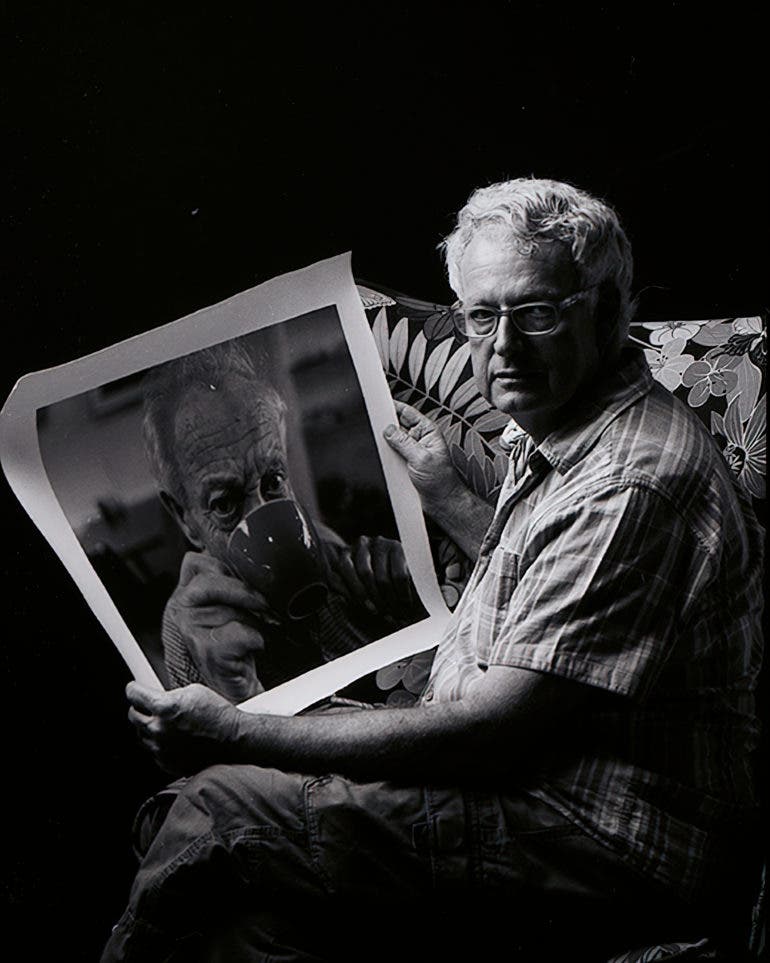
© Christopher Osborne
I agree with Chris wholeheartedly on his thoughts about the attractions of analog film. When it became mainstream in the early 2000s, I embraced digital photography, getting an early Olympus Camedia model. But as someone who grew up on 35mm, the desire to shoot film never really left me, even as digital cameras improved technologically each year. When my grandfather (the man who taught me photography) passed away in 2014, I picked up his Nikon FM2 again – the camera that I learned my photography on. As a sports photographer who is always used to calculating and shooting on the go, I had to slow myself down while using film. Making each frame count also made me enjoy the thought process behind each shot. Immersing myself back into this wonderful medium also kickstarted my vintage film camera collecting hobby.
The Alluring Romance of Film and Analog Photography
“The materiality of each type of film roll. Every film type is so different, so it’s very conscious.”, says Don Surrendra, who works as a Product Development Manager for a leading airline. “Getting it right, in-camera before you press the shutter, really makes you think. Shutter clack is one of the most satisfying things in analog.” For Don, each vintage camera has a distinct aural tone. Like most photographers, he too adopted digital cameras for ease. Digital lacked the organic feel. It also lacked personality and was far too clinical and perfect.
“Any search on social media for images of any landmark clearly demonstrates the lack of creativity and the ‘sameness’ of the majority of images. As phones and cameras proliferate, the images also become more identical.”
Don Surrendra

©Feroz Khan
“It’s the same thing for me”, says Preschelle Ann Bigueras (who confesses she hasn’t used a proper digital camera in a very long time). “The sound of the shutter and wind of film cameras are just music to my ears. The excitement and joy of receiving scans from the lab and then going through them, you might found a photo that you forgot you’ve taken; it’s that kind of feeling that I’ll never have when shooting digital.”

© Preschelle Ann Bigueras
Altamash Urooj, a commerical photographer based in Dubai, is more poetic in his response: “When you hit that shutter release, that click and following thud is just such a punch into the ether, a sound that seemingly echoes through your bones – it feels like you managed to capture light itself into this box, using alchemy and chemistry. It’s romantic, peaceful, full of mystery and tactile.”
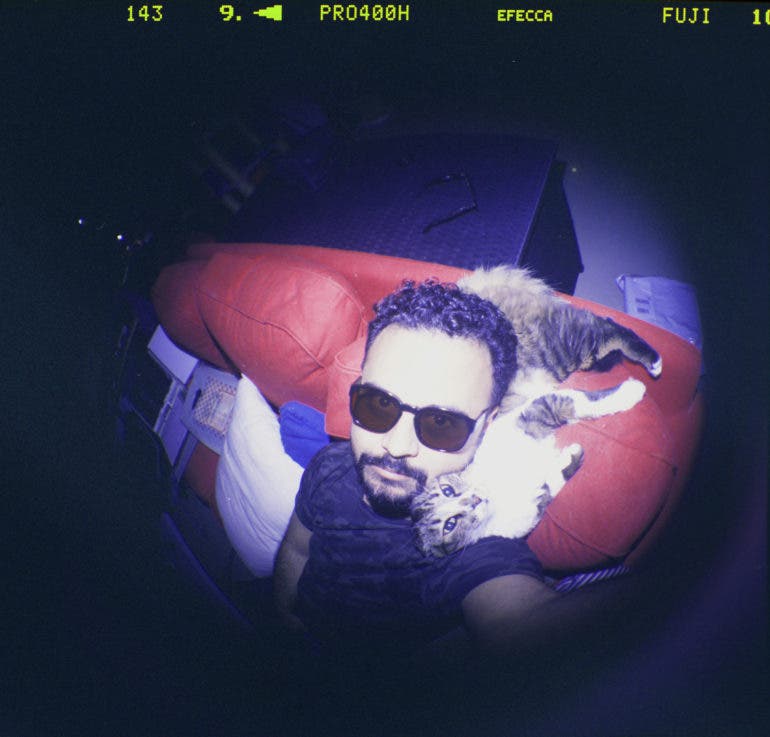
The Way Forward for Analog and Film Photography
Given that many manufacturers are discontinuing their film models, I was curious to know what members thoughts about the future of the format. “This is only part of the picture”, says Christopher. “While manufacturers like Nikon have discontinued the Nikon F6, other manufacturers such as Leica are developing new analog products. And other new cameras are being developed too.” Chris notes that this trend is simply part of a larger picture where the order of strength and success is changing.

Jan Pavlovcik is someone who would love to see point and shoot cameras that can actually compete with the cameras in phones. “Something truly pocketable, absolutely minimal that is designed to literally point and shoot. And share right after. Fujifilm X100 series cameras are close to that, Leica’s Q2 as well.”

© Jan Pavlovcik
I tend to agree with the longevity of film cameras; their appeal spans decades. I’ve swapped out many DSLRs for newer models over the last 10 years, but I’ve got film cameras that are more than twice my age. For many years, I would spend a few hours each week scouring eBay for vintage cameras. You’d be surprised at how cheaply people were willing to part with gear owned by their parents and grandparents. I snagged some really good deals then (including a fantastic 1st edition Nikon F). While I can’t say each of those units has been used by me to date, the plan is to have all of them active in the coming years.
Why Shoot Analog When Digital Can Duplicate It?
Altamash notes that one of the most vulnerable parts of creating special images is letting go of control. “There’s a wonderful fight between trying to control an analog process and the results,” he states. “The wildest things can happen when you shoot and develop film. Another aspect that I refuse to let go of is nostalgia.” He proceeded to say that there’s a power to taking an image, and not immediately sharing it with the world.
“You stay in the moment instead, and then days, weeks, or even months later you finally develop that roll, and you look at the negative and think, what’s that image ? And you take out the loupe and try to make it out. You quickly scan it, and the memory of that moment is revealed to you, you relive it again. That’s the power of analog film for me.”
Altamash Urooj

Preschelle loves that film forces her to be deliberate before clicking the shutter. “Sure, there are a lot of apps and presets that can replicate the look of film,” she says, “but they can’t replicate the process of shooting film. It’s a slower process.” Preschelle is smitten with excitement and joy of receiving scans from the lab, and then stumbling on a photo that she forgot she shot. It’s those kind of feelings that she would never get with digital.

Don and Jan concur that the cost factor matters a lot, but the excitement of seeing the final results is something they actively chase. “Yes, it can be financially costly, but the rewards too are immense,” says Don, who’s collectively spent over 2,000 USD recently on cameras, film, and development kits in the last couple of years. “Improving your craft, creating physical images, using alternative photography techniques, such as Cyanotype, which I am learning now. The end to end process has many tangible rewards, i.e. the film development process [which] I fondly call my ‘chemical romance. It is not only the final image I am after. The whole tactile process is what interests me.”
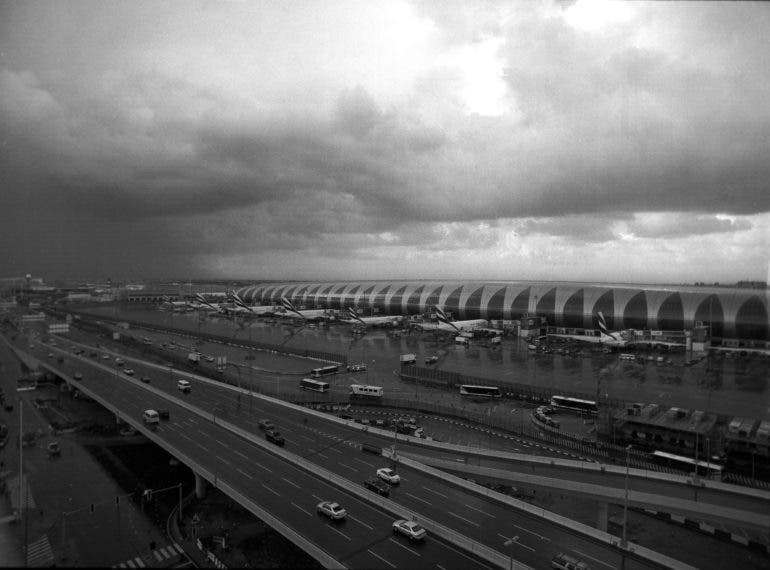
© Don Surrendra
“Sometimes, I do portrait sessions for the cost of film and development to be able to shoot more”, says Jan, who estimates he’s shelled out around 11,000 USD on his film kit over the last three years. “Going out with one roll, 24-36 clicks or just 12 on a medium format film, each click costs money, and I won’t see a preview until I get the film developed. It makes me fully focused, constantly reviewing the lighting [and] surroundings for possible compositions, pre-focusing to where I think [the] action might happen.” Costs definitely add up, but they also force Jan to be more selective and responsible when he shoots. For him, it’s a meditative process.

Filmoticon Spacelab
All said and done, the process of shooting film doesn’t end with the winding of the roll after the last exposure. While some like Don painstakingly develop negatives in their own homes, others like Preschelle would mail their rolls abroad to be developed. This is where Alexie Rieza saw a fantastic business opportunity some years ago. The story of how he came about to set up his development lab, Filmoticon Spacelab, inside his home is unique:
“In 2016, I started to get bored with digital photography.”, explains Alexie. “It was so easy, so perfect, and the gratification was instant. With my dwindling interest in pursuing an alternative career in becoming a digital photographer later, I started to look for other inspirations because I was not yet ready to give up my interest in visual art and convert it into a side hustle.”
“One day, in a photo shop near me, I saw some expired films displayed in one of their shelves. I casually asked if they were still developing films, and the shop owner looked at me, gave me a smile, and then said, film is dead. Upon hearing that, I asked if he can give me those expired films, which he kindly obliged. That brought a lot of nostalgia. I went home, spent countless hours doing some research about film photography in UAE and a eureka moment happened to me. Why not help revive the film industry? It was a perfect moment for me because it was then that almost all labs were literally throwing away their film lab equipment because they don’t just eat a lot of space, [but] the demand was so low to justify keeping the operation to continue. I began to divert my full attention into it and started buying those machines for really cheap prices. Most of the times, I got lucky because I acquired some stuffs for free too! Ultimately, my decision was a calculated risk. For over 3 years, I studied and monitored the growth of the business, and I felt this is the perfect time to trust the data and go full time.”
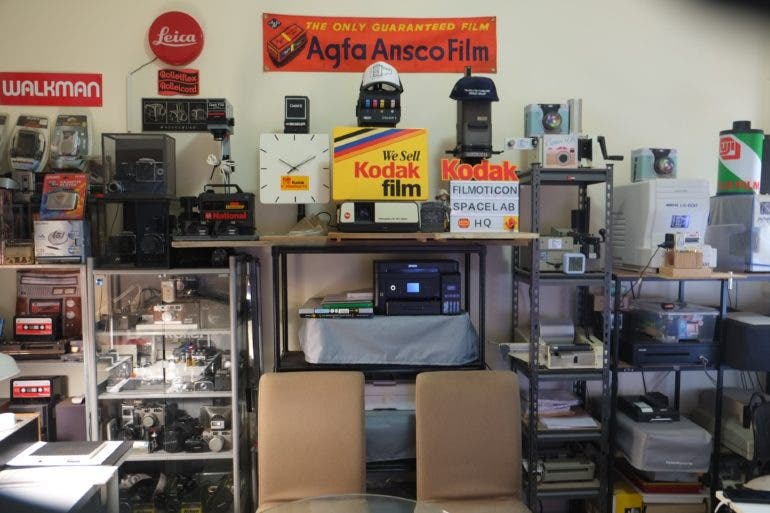
© Alexie Rieza
As probably the only all-round film development lab in the city, Alexie’s services have come as a great relief. He stepped up at a time when the analog community needed it most. His efforts to decorate the labs interior with nostalgic memorabilia and signs are commendable. Stepping into his lab is like taking a journey back to my childhood, reliving my days as a film photography student. I’m personally relieved that he offers a quality service at affordable prices despite spending close to 80,000 USD to start his venture. Some of my undeveloped rolls will find their way to him over the next few weeks. Plus, I can finally start shooting all those 120 films I have kept aside for years.
“Film never died, it just transformed” is a motto he lives by. “The history of art tells us that when film photography was invented, it slowly took the place of painting as the medium of art to present realism. There were fears amongst painters that time they will eventually cease to exist due to this. However, painting never died, but it just transformed into different art movements later like Art Nouveau, impressionism, fauvism, etc.” In his eyes, photography is going through he same thing. Digital photography partially took the place of film photography in terms of being the medium to present realism. To better explain this, Alexie associates digital photography to reality, and film photography to fantasy or dream.
“Film photography’s apparent inconveniences, imperfections and delayed gratification became its own charm.”
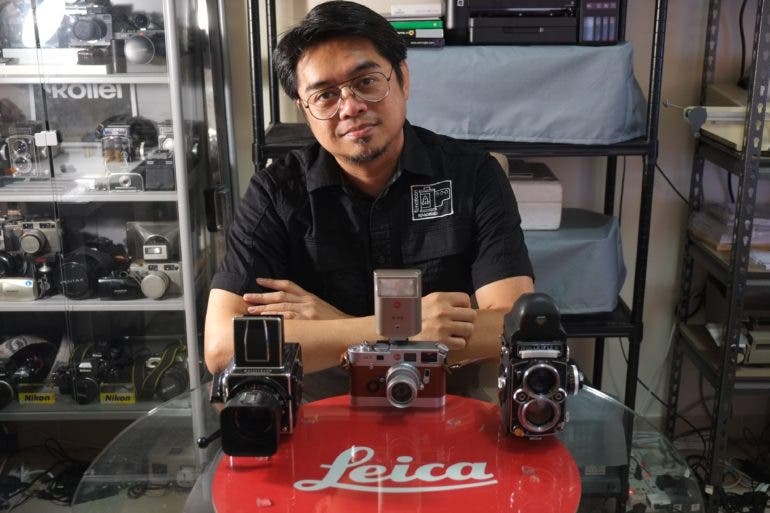
Analog Photography in UAE is a non-profit group for anyone based in the United Arab Emirates who’s interested in analog photography